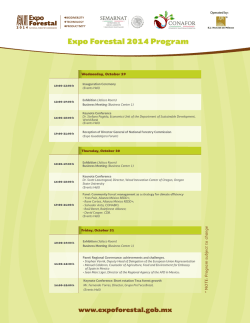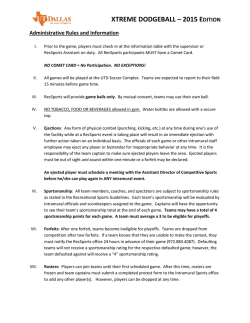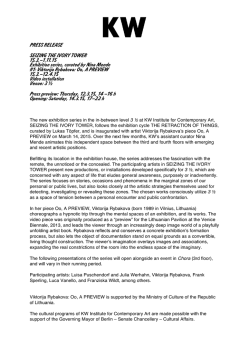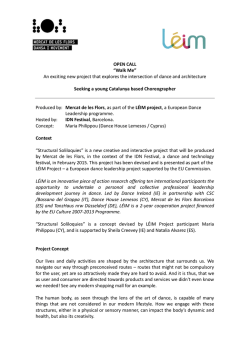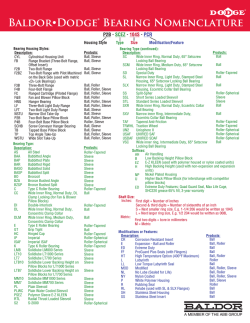
THE ADJUTANT - The Napoleonic Association
THE ADJUTANT Autumn 2014 www.napoleonicassociation.org From your Editor Hello, Thank you to all of those who have supported me in my efforts to keep The Adjutant going this year. It has been a very busy re-enactment year and next year is going to be even busier! I have been Editor of the Adjutant for two years now and I have tried to give you an online magazine that you want to read and contribute to. This task has been a struggle for me as I cannot come to every re-enactment and my role as a Camp follower has meant that I have spent most of my time in my own Camp cooking or doing other odd jobs. Moving forward into next year it is therefore with some regret that I must inform you that I will be standing down from The Adjutant. This is due to the fact that I am now working full time and I do not have enough hours left at the end of the week to give to it. I also feel that some of our younger membership are more technologically savvy and perhaps can do a better job. I will keep going until the AGM at the end of January but am letting you know now so that you have time to consider a replacement or if indeed you feel that the Adjutant is worth retaining. If you have any comments or ideas for any articles please feel free to contact me at traceydpaylor @aol.com . The deadline for copy is Friday 21 November with a hope to publish in early December. Thanks Tracey Paylor In this Issue: Chairman’s Report .............................................................1 British Commander’s Report ...............................................3 French Commander’s Report ..............................................5 Events Update for 2015......................................................7 Social Media and the Napoleonic Association........................8 Duchess of Richmond Ball.................................................10 Duchess of Richmond’s Ball Booking Form .........................12 Pictures from the Tower of London ....................................13 Unseen Waterloo Exhibition...............................................16 “You Shall Go to The Ball- But what to Wear?”....................20 The Chairman’s Report Doesn’t time fly when you are enjoying yourself! It doesn’t seem two minutes since I was writing how much I was looking forward to the new season and now it is close to its end. We have had a varied season as far as weather is concerned, wet at Painshill through to very windy at Spetchley. However I enjoyed them all. The Executive Committee continues to improve communications to members. We have now set up an email system that allows us to send information to individual members. We have also updated the contact list of Unit Commanders. This allows us to pass information quickly to those who most need to know it. We are also changing the way the Association’s Facebook page works and the Association’s Facebook administrators will explain the changes in detail in due course. The Association’s Waterloo 200 Sub-committee (W200) continues in its work to try and ensure that we have a safe and enjoyable Waterloo 200. W200 is working with the NAN and others to ensure that our voice is heard. The Issue Register raised by W200, and contributed to by Crown Forces North America, NAN and our colleagues in Germany, is seen as a useful tool by the Belgian Organisers. The Organisers are trying to deal with the Issues listed, however many of them will not be resolved until the detailed planning of the event is completed. Members of W200 will be visiting Belgium shortly to discuss these Issues with the Organisers. W200 will continue to issue Waterloo Updates as and when information becomes available from the Organisers. I am sure that there will be many rumours flying around about Waterloo 200 over the next few months, however unless you get information from W200 then the rumours are most likely to be untrue. If you have any concerns about what you are being told by people other than W200 then please contact me. 1 Accreditation of Units for Waterloo 200 continues. A further training weekend will take place at Ickworth House on 11th and 12th of April 2015. By the end of that weekend we should have been able to accredit the units that wish to attend Waterloo 200. Units who did not attend Spetchley can make arrangements through their Brigade Commanders to be accredited at other events. Finally, I have received some feedback on the “Duchess of Richmond’s Ball” to be held after the Association AGM in January. I must stress that this is not an “Officer’s only” type of event. We have held an Association Winter Party for a number of years but to mark the 200th Anniversary of the Battle of Waterloo we have re-named it the “Duchess of Richmond’s Ball”. It is also being held in a most appropriate setting in Bury St Edmunds. As in previous years all can attend whatever role they play in the Association or at re-enactments and I would encourage you to participate so we can get such a momentous year as 2015 off to a fantastic start. Many Thanks Martyn Monks Chairman of the Napoleonic Association 2 The British Commander’s Report Wot ho One and All! Seasons end and the Party time is about to begin again. Before we all get too excited about the big event next year please try to remember a few things: 1 . There was Napoleoic Reenactment before the “first bi-centennial” in 1989, (Haynes and I were certainly there) and Napoleonic re-enactment will continue after the “last one in 2015”. 2. Always work for the good of your unit. Some units have higher drill standards than others, some may have a better camp life but whichever it is, it doesn’t make your unit “better” than its neighbour, just different. 3. This is a hobby and it is there for the enjoyment of those taking part. When it stops being fun people leave. 4. Communication. the most important thing. (enough said) 5. When making out your Xmas wish list it should go 1 Basic kit, 2 A good tent, 3 Everything that you can’t make yourself. 3 6. I can’t remind you about the party at Worcester nor send you Festive wishes as I am told there will be another Adjutant out in December. So T.T.F.N (ta,ta for now.) See you at TORM?.......... Wagg P.S. Why do I still not yet have a paper copy of the Adjutant this year? Note from the Editor: I do not know the current state of play about posting paper Adjutants. I have not been asked to make a paper version of the Adjutant. 4 The French Commander’s Report Hopefully, by the time you read this, the small brave band of French prisoners, held at Fort Amherst, will have made their escape, ready to fight in the upcoming 2015 campaign season. Following on from a number of very successful campaign weekend events at Stanton St John, the Fort Amherst event promises to bring something different to the re-enacting calendar. A special note of thanks should go out to Tony Wilks and his team for making the event possible. With those thanks ringing in their ears it’s also an appropriate time to pass on the thanks and appreciation of all the members of The French Brigade, to those of who have worked behind and often in amongst the scenes, in ensuring the year’s events have been so successful. Particular thanks once again to Tony and his team; the Pyro team, who really set some new records this year for ‘big bangs’; all those who volunteered to do the commentaries at events; and the NA Committee, who really make all of the things we enjoy possible. It has been great throughout the year to see so many new recruits in both the Allied and French units. I have been impressed by how some have literally thrown themselves in at the deep end and opted for the total immersion experience. No tents, homemade bivouacs – well a blanket and a stick; period food and rations. It’s been great to see. It’s also been nice to see people sharing experiences and knowledge throughout the various social media forums – the most recent of which concerned the making of period hard tack. Looking back on the events throughout the year, we seem to have been fairly lucky with the weather and it’s difficult to pick a favourite event. One event that seems to continue to grow and go from strength to strength is the M5 Spetchley multi period event. There was an excellent turn out of Napoleonic troops at the event and it was a 5 real pleasure to see our friends, Willem and Christine from the 85e, travelling over from the continent. Brian, Richard and Hugh (and many others) work hard throughout the year in planning Spetchley and the credit for the success of the event really should go to them. I would also like to personally thank Sap and his dedicated team of sapeurs and mineurs, who have turned out, both home and abroad, on many occasions for the Brigade. They have helped to swell the numbers within our ranks and prevented many of the skirmishes at events from being too one sided. Next year should be a busy time for all of us and whatever happens at Waterloo in terms of selection it is worth remembering that there are two other excellent, re-enactor friendly events taking place around the same time: Wavre and Ligny. Both of these events have excellent track records and have been thoroughly enjoyable in the past. We still have The Lord Mayor’s Show to look forward to on 8th November. A number of you have already registered your interest in attending. If there are any more French troops who would like to attend please let me know, no later than the first week of October. Salut et Fraternite Captain Duncan Miles 45e 6 Events Update 2015 March 14-15: Wellington Arch April 11-12: Ickworth House, nr Bury St Edmunds Suffolk May 2,3,4: Battle of Nations , Wollaton June 9-11 :Horseguards / BBC One Show June 15-20: Waterloo June to be confirmed: Wellington College July 11: Blenheim Battle Prom July 18-19: Kelmarsh English Heritage : to be confirmed August 8-9th : Cranford to be confirmed September 18-19 : Fort Amhurst, Chatham: to be confirmed Kind Regards Tony Wilks 7 Social Media and the Napoleonic Association Love it or loathe it, social media is a part of life for an increasing number of people. As an association we need to think about the way we use social media – both as a promotional tool and as a group of mates. Right now, we’re behind in the game. We’ve been using a Facebook ‘group’ as our main social media space. This is great for us as members, but it doesn’t look very professional. The group has members who aren’t NA members, friends from overseas, potential sponsors, etc. Recently we’ve had some rather worrying incidents, such as non-members posting inappropriate photos. While most of this was posted by non-members, it doesn’t look good to potential sponsors or new members. With this in mind, your committee have been discussing what we need to do. So that we can keep our social media presence looking professional but continue to be a great bunch of mates who can share interesting articles, research and photos on social media, the following is going to happen: The current Facebook group will be replaced by a closed members-only group. We’ll post the link to the new group once we’re ready to go live and after a suitable length of time we’ll close the old group. The new group can’t be viewed by non members, so we’ll all be able to chat away and share info, provided we all stick to the rules (they’ll be posted in the group). We’ll ask all our overseas friends, prospective members, potential sponsors and interested friends to like the Facebook page – which is separate to the group. This is our public social media face and we’ll keep it professional and friendly. We will be able to use the page to direct people to interesting pages on our website and posts to the page also link to the NA Twitter feed. 8 This means we’ll be able to continue to promote ourselves and look really polished while doing it! All of the Facebook group admins have a background in IT, Digital Media or Social Media and we have two from the Allied camp and two from the French camp, just to keep it impartial. The administrators are Andy Robertson, Lyndon Sanderson, Laura Short and Adam Paylor. If you use social media to connect with the NA, make sure you keep your eyes peeled on the group for what you need to do – we’ll post everything on the group and make sure everyone knows what to do! Laura Short – 45eme de Ligne (Professional background as a Digital and Social Media Advisor for a national energy corporation with 5 million customers). 9 The Napoleonic Association’s Duchess of Richmond’s Ball Athenaeum Assembly Rooms Saturday 31st January 2015 This is a reminder to all members that it is less than 2 months now before tickets go on sale to non-members on 31st October, so please get your booking forms in to me as soon as possible. Please remember to include a large (A5 size) stamped address envelope so that I can post your tickets back to you. I have actually received some bookings without any addresses, stamped addressed envelopes or unit names. This is a problem as I am unable to send out the tickets without this information. We would like to know which unit you belong to so that we can arrange the table settings for supper. Members may book one extra ticket for a husband/wife/partner who is not a member, at the reduced rate of £35, but any other non-member guests/friends/family members must pay the non-members rate of £45. 10 Also, if any soldiers are coming to the ball, who would be prepared to take a turn at guard duty, as people arrive and during the dancing, please let me know so that we can arrange a roster. The more we have the shorter the guard duty, but I feel that it is an important part of the scenario and will add to the overall wow factor of the event. I shall look forward to receiving your booking forms and seeing you all at the ball. Kate Davis 3rd Foot Guards 11 Email Address tickets are to be sent to : Total Payable Name Unit Name NA no. Amount Please make cheques payable to the “NA Duchess of Richmond’s Ball 2015” and enclose a stamp addressed A5 envelope to the address you would like your tickets sent to 12 Pictures from the Tower of London Thanks to Alan Balding for supplying these photos 13 14 15 Unseen Waterloo The Conflict Revisited : Photographs from the battlefield by Sam Faulkner is a 5 year photographic project commemorating the Battle of Waterloo. We are pleased to announce that the final project will be exhibited at the prestigious Somerset House, in central London, opening in June 2015 to coincide with the 200th anniversary. The exhibition will include 100 life-sized photographs shot in a pop-up studio on the fields of Waterloo during the annual reenactment. Since 2009 we have photographed around 300 re-enactors from from both the Allies and French sides The images are shot in super high resolution that allows the final pictures to be blown up to an incredible size and retains the smallest detail. The results are stunning almost painterly portraits. In 2013, knowing that it would be the last chance to finish the project before 2015, we shot cavalry on horse back using the same lighting setup just scaled up. At the exhibition these too will be life-sized around 3.5 wide, completely dominating the room. 16 The biggest challenge of shooting at Waterloo was of course the weather. Almost without exception we had to contend with blustery and showery conditions. Every time the clouds burst we would scramble to cover £80,000 worth of camera kit. But on the rare occasions the sun did come out, we weren’t any happier. Our lighting set up was designed for overcast skies and bright sunlight could ruin a picture. The exhibition is curated by Patrick Kinmonth, the renowned opera director, costume designer and creative director. Previous exhibitions Patrick has curated include Dangerous Liaisons: French Fashion in the 18th Century at the Metropolitan Museum of Art in New York and Mario Testino’s Portraits exhibition at the National Portrait Gallery. The Somerset House exhibition will be free to the public and be open from 11th June to 6th of September. We will also be publishing a Unseen Waterloo book of the images to accompany the exhibition. Having thought long and hard about how to approach this we have decided to retain utmost control over the book and will be producing it ourselves rather than through a commercial publisher. This will allow us to create an absolutely stunning book without having to compromise on design, paper or finish. 17 The book is being design by Phil Cleaver of Et Al design, probably one of the most respected book designers in Europe. It will be printed in the UK by Connekt Colour. Later this autumn we will be launching a crowd funding round on Kickstarter in order to raise some money for the publishing. This will be your opportunity to support the project and receive an incredible array of awards in return, from postcards to private tours of the exhibition and of course the finished book. Find out more about how Kickstarter works at http://goo.gl/s2oIVL If you want to join our mailing list then please email your details to : info@ unseenwaterloo. co.uk and we will let you know when the campaign goes live. 18 Keep an eye on the Unseen Waterloo Facebook and Twitter pages and visit www.unseenwaterloo.co.uk to find out more and stay in touch with what we are doing. We will be adding more images to the website in the build up to the exhibition. It just leaves us to thank everyone who took part in the project and had their portrait made. Everyone who had their photograph taken should have received a print a few weeks later. If yours did not arrive then it was probably because we could not read your hand writing. Let us know and we will sort it out. We sincerely hope everyone who collaborated with us enjoys the exhibition and the book. Please do get in touch if you have any questions or want to find out more. Many Thanks Sam Faulkner 19 “You shall go to the Ball”But what to wear? I have been attending Regency balls for a number of years now, and something that has particularly struck me Ball Dress in the is the number of ladies who Napoleonic Era turn up in dresses unsuitable for dancing in, because they are too long, or have a long train, with the result that they can’t dance properly because they are trying to hold it up all the time, or someone else treads on it, with unfortunate results. With our own NA Duchess of Richmond’s Ball coming up, I thought I would offer a few pointers. The one thing to remember is that the fashion etiquette of the time dictated what you wore for a particular occasion. There were three types of dress worn in the evening: evening dress, for dinner or an informal social occasion, distinct from morning dress which one wore around the house during the day; ball dress, for going to a dance; and full dress, the most formal type of dress for a really formal dinner, concert, reception or the opera. Full dress might well also include some feathers with an elaborate evening cap, or a parure (matching set) of tiara, necklace, bracelets and earrings. Trained over-robes might well be worn, with long gloves and a trailing shawl to complete the outfit. Evening wear might be a less elaborate version, say for a dinner party, or simply exchanging a cotton morning dress with a filled in neck line for a silk dress with a low neckline and an attractive necklace – sleeves long or short to suit the wearer’s age and taste. 20 A ball dress was designed to dance in, and by 1815 a fashionable ball dress had decorations and flounces at the hem, which was worn well clear of the floor to show the feet and thus allow the dancer to show off her dance steps (or at least not to trip over her hem!) Remember that most ladies who danced were below the age of 25 (don’t worry, it doesn’t apply today!) An older lady might well wear full evening dress with a trained skirt to a ball, but she would show by this that she was a chaperone and had no intention of dancing. I have noticed that some NA ladies wear dresses of a very directoire, very French style, which is, after all, understandable if they belong to a French regiment. This is actually quite an early style, from the 1790s, and was a slightly more extreme form of the soft muslin gowns fashionable in England and known as Robes à l’Anglaise. Although we think of historic dress in terms of eras – Tudor, Stuart, Georgian, Regency, Victorian – fashions changed from one year to the next as much then as now, and the fashion magazines of the time kept ladies informed of the latest modes. While these changes, from month to month, were slight, taken over the whole twenty-year period of the Napoleonic Wars there were quite significant changes. In Jane Austen’s novel Northanger Abbey (written in the 1790s) she writes about the heroine and her friend “pinning up each other’s trains for the dance”. So if your dress is of an earlier style, then you should pin up the trailing skirt before attempting to dance in it, or, better still, have a little button 21 and worked loop to hook it up securely. By 1815, as I have mentioned above, skirts were a very different shape – in the early 1800s they became very narrow, then around 1811-12 the waistline dropped a bit, until by 1815-16 the waist was right up under the bust with a conicalshaped skirt falling from it to an elaborately decorated hem. For a ball commemorating 1815 this style is ideal. A word about Court Dress. An even more formal dress was Court Dress, which was only worn for attendance or presentation at Court in the presence of Royalty. Queen Charlotte refused to relax the rules about wearing hooped petticoats with Court Dress, regardless of the changing fashions and rising waistlines, with the result that ladies’ Court Dress took on a bizarre appearance. Tall feathers were worn on the head as well. Needless to say, it would be impossible to dance in such an outfit, but it was not intended that anyone should. What is interesting is that this was a peculiarly British fashion. It was, of course, based on the formal fashions of the 1760s when George III became King, and these were influenced by the French court. But as fashions changed radically to the simpler neo-classical look and the new Revolutionary France looked to English tailors for men’s fashion, the old formal styles were swept away. When Napoleon crowned himself Emperor in 1804, his new court had to invent a new Court Dress. Led by Empress Josephine, formal and court wear for ladies right across the Empire kept to the elegant high waisted style but used the most elaborate fabrics, with long sleeves, trained robes and Grecian-style diadems. Once again, however, these dresses were status symbols for very formal occasions, and most definitely not worn for dancing. 22 I have met some visitors from abroad at balls I have attended, with the gentlemen in glittering uniforms and the ladies wearing quite elaborate outfits with trains, who were obviously unused to dancing. Friends of mine who attended balls on the continent a few years ago said that there was very little dancing then and they were more like grand receptions, held in castles or palazzos. My theory is that these re-enactors were recreating the style of the European courts and the Bonapartist aristocracy. French Revolution or not, British society at this time was far more democratic, and we in the English dance groups usually dress in a simpler style consistent with the country gentry and minor aristocracy of Jane Austen’s world. But it would be best ball gowns and bling for the Duchess of Richmond’s ball! So if you are coming to the Duchess of Richmond’s Ball next January and are thinking of getting a new ball dress, here are a few tips: 1. Don’t make it too long—it was quite all right to show your ankles in 1815. The hem line should be well clear of your instep. 2. If your dress does have a train, fasten it up securely so that you and anyone else doesn’t tread on it. If you wanted to make a grand entrance, you could wear a separate trained over-robe and take it off when you want to dance. 3. Whatever you wear, be comfortable in it. Secure your hair ornaments so they don’t fall off, and put ribbons or elastic round your shoes if you think you might slip out of them. Regency dancing is just as lively as a ceilidh! 4. Above all, remember you are there to enjoy yourself. Heather Constance 23 24
© Copyright 2024
